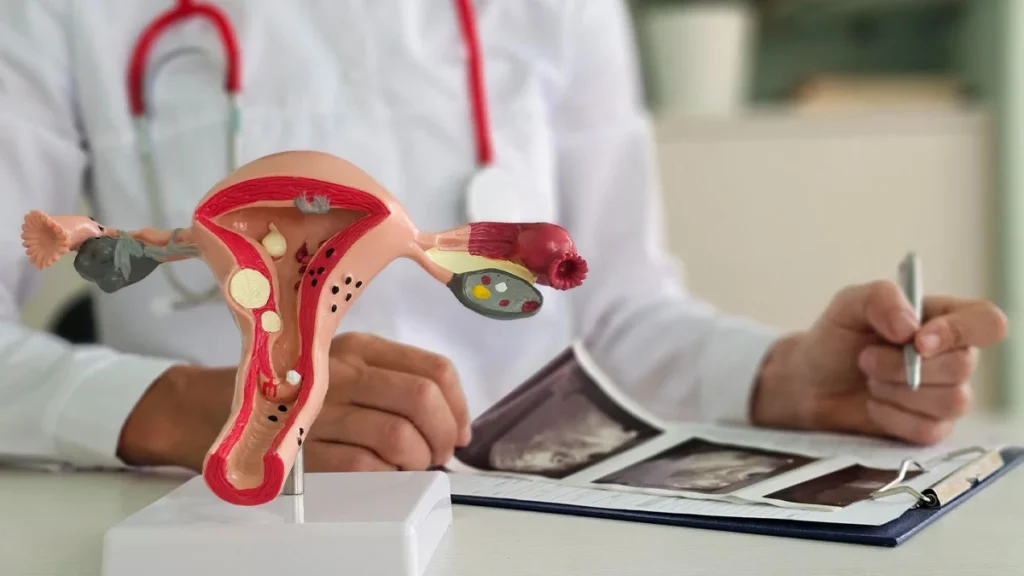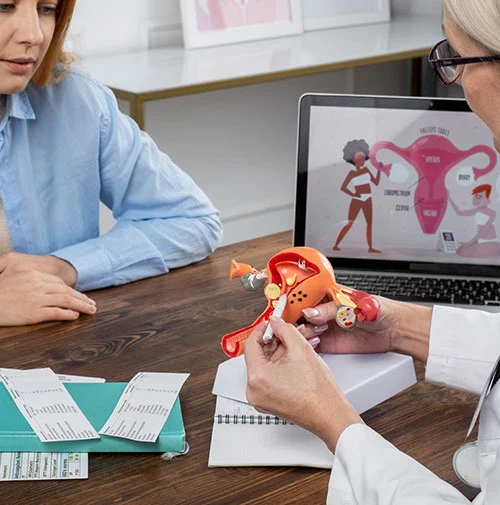
Fibroids: Types, Causes and Prevention Tips
If you’ve ever experienced excessive bleeding, pelvic pain, or pressure down there that just doesn’t seem quite right, it’s possible you’ve had a run-in with uterine fibroids. These are some of the common symptoms of uterine fibroids that many women face, often leading them to seek medical advice.
But what exactly are fibroids? Essentially, they’re firm, compact tumors made up of muscle and fibrous tissue that can develop within the walls of the uterus itself or get attached to it somehow.
While fibroids are incredibly common, affecting up to 80% of women by age 50, their size and behavior can vary drastically depending on the type and individual risk factors. Some remain barely noticeable while others become huge problematic masses demanding attention.
Table of Contents
ToggleWhat Actually Causes These Uterine Fibroids
Okay, so while we may have a general understanding that fibroids somehow stem from abnormal muscle growth in the uterine region, medical experts still aren’t 100% certain about their root biological causes. A few key factors seem to play pivotal roles in their development and behavior though:
- Hormones: Both the estrogen and progesterone hormones produced by the ovaries act like fertilizers for fueling fibroid growth. More hormones, more feeding.
- Genetics: Fibroids do appear to have hereditary links, with first-degree relatives of sufferers being at increased risk themselves.
- Early Menstruation: The more periods you experience over your lifetime, the greater the fibroid probability.
- Vitamin Deficiencies: Not consuming enough vitamins like A, C, D, and E may disrupt cellular growth and healing processes
- Environment: Some evidence suggests exposure to certain toxins may trigger fibroid development.
- Age and Family History: Fibroids are most common in women of reproductive age, typically developing during your 30s and 40s.

Breaking Down the Different Fibroid Varieties
Not all fibroids are created equal when it comes to their characteristics and symptoms, so paying attention to exactly which type you’re dealing with is really important. The four most common categories include:
- Intramural Fibroids: These develop within the muscular uterine wall itself and can potentially grow inwards, distorting the endometrial lining and causing heavy periods with clots.
- Subserosal Fibroids: Developing outwards into the pelvic area, these can become massive enough to create intense pressure on the bladder or trigger low back pain.
- Pedunculated Fibroids: Think of these as stemmed growths attached to the exterior of the uterus by a thin fibrovascular stalk – they can twist and cause nausea with movement.
- Submucosal Fibroids: These protrude into the open uterine cavity itself, often causing severe cramping and abnormally heavy bleeding during periods.
Basically, the closer and more invasive those buggers can get into key uterine structures, the more potential they have to create unpleasant symptoms. If your fibroid issues progress into severe bleeding, sharp pelvic pain, or bladder/bowel complications, it’s definitely time to get things checked out! These severe symptoms of uterine fibroids should prompt you to seek help from a medical professional. A Gynecologist in Chandigarh or your nearest medical center can provide the necessary care and treatment options.
Simple Lifestyle Tips to Prevent Fibroids
While not perfect, taking extra care to embrace these nutritious and self-care habits may be able to curb the severity of your fibroid formations or potentially prevent them altogether:
- Load Up On Fibroid-Fighting Foods: Dark leafy greens, fruits, vegetables, nuts, seeds, and healthy proteins and fats can help stymie uncontrolled cellular growth.
- Stay Active & Mobile: Even moderate aerobic activity alongside strength training helps regulate hormonal fluctuations that feed fibroids.
- Reduce Stress, Embrace Joy: High-stress living and negative mindsets disrupt all sorts of hormonal balances. Find peaceful, positive outlets!
- Ditch Toxic Exposures: Be thoughtful about chemical cleaners, processed foods, secondhand smoke, and any other potential toxic exposures whenever possible.
- Maintain a Healthy Weight: Avoiding weight extremes is ideal for balanced hormone regulation. That means no excessive diet restriction or overconsumption.
For more information on uterine fibroid symptoms, please visit this link.
Conclusion
Fibroids are a common problem that up to 80% of us birthing people will probably have to deal with at some point. But just because they’re common doesn’t make them any less debilitating or worthy of attention.
By being proactive about living a nutrient-rich, low-stress, active lifestyle while we’re still in our 20s and 30s, we may be able to avoid the absolute worst growth and accompanying symptoms. Or at the very least, maybe we can stay small and manageable before resorting to more aggressive treatments down the road.
Fibroids are a fertility nuisance and menstrual monster – it’s time we start addressing them with the vigilance and preventative efforts they demand!
FAQs
Q1. Can fibroids affect fertility?
Ans. Fibroids can potentially impact fertility by interfering with implantation or blocking the fallopian tubes. However, many women with fibroids can still conceive and carry pregnancies to term.
Q2. Are fibroids cancerous?
Ans Uterine fibroids are almost always benign (non-cancerous) tumors. The chance of a fibroid being cancerous is less than 1 in 1,000.
Q3.How are uterine fibroids diagnosed?
Ans Fibroids are usually diagnosed through a pelvic exam and confirmed with imaging tests. Common diagnostic tools include ultrasound, MRI, and hysteroscopy.
Q4. What treatments are available for uterine fibroids?
Ans Treatment options range from watchful waiting and medications to minimally invasive procedures and surgery. The best approach depends on the size and location of fibroids, as well as the severity of symptoms.
Q5. Can diet and lifestyle changes help manage fibroids?
Ans Yes, maintaining a healthy diet rich in fruits and vegetables, exercising regularly, and managing stress can potentially help manage fibroid symptoms. However, these changes alone may not be sufficient for severe cases.
